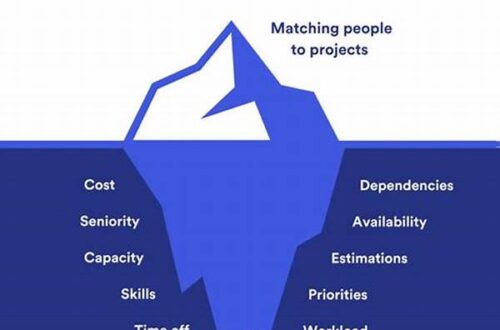The Evolution of Military Alliances in the Age of Technology
The technological impacts on military alliances have been profound and transformative, affecting the very nature of international relationships and strategic collaborations. In the contemporary era, technology has emerged as a pivotal force driving change within the military domain. Nations, in their pursuit of security and strategic advantages, have increasingly integrated advanced technologies to enhance their military capabilities. This technological evolution has not only strengthened existing alliances but has also fostered the formation of new partnerships based on shared technological interests and capabilities.
Technological impacts on military alliances can be observed in the way nations collaborate for joint development and procurement of cutting-edge defense systems. The integration of technologies such as artificial intelligence, cybersecurity, and advanced communication systems has necessitated greater interoperability among allied forces. This interoperability is crucial for effective joint operations, ensuring that multinational forces can operate seamlessly across diverse environments. Consequently, these technological advances have reinforced alliances, emphasizing the importance of cooperation and shared technological expertise in maintaining global security.
Moreover, technological advancements have introduced new elements to the strategic calculus of military alliances. The development of missile defense systems, unmanned aerial vehicles, and cyber capabilities are but a few examples of how technology is reshaping defense strategies. As nations continue to invest in and develop these technologies, alliances are adapting to incorporate these capabilities into collective defense strategies. The technological impacts on military alliances promote mutual growth and adaptation, ensuring that alliances remain relevant and effective in the face of evolving global threats.
Technological Integration in Defense Strategies
1. Technological impacts on military alliances have led to a greater emphasis on interoperability among allied nations, ensuring that joint operations can be conducted smoothly and efficiently.
2. The integration of cyber capabilities into defense protocols highlights the technological impacts on military alliances, necessitating collaborative approaches to address emerging digital threats.
3. Advanced communication technologies have revolutionized command and control structures within alliances, showcasing the technological impacts on military alliances in optimizing response times and strategic coordination.
4. Technological impacts on military alliances are also evident in the development of shared defense infrastructures, allowing for resource optimization and capability enhancement across member states.
5. Military alliances are increasingly focused on joint technological research and development initiatives, reflecting the technological impacts on military alliances in fostering innovation and strategic advancement.
Challenges and Opportunities in Technological Advancements
Navigating the technological impacts on military alliances presents a complex array of challenges and opportunities. As alliances strive to keep pace with rapid technological advancements, they encounter issues related to technology transfer, standardization, and security protocols. The integration of new technologies often requires extensive coordination and consensus-building among allied nations, each bringing its own set of strategic priorities and constraints. These challenges underscore the need for robust frameworks that facilitate collaborative decision-making and ensure technological compatibility.
Despite these challenges, the technological impacts on military alliances offer significant opportunities for enhancing collective defense capabilities. The joint development of cutting-edge technologies not only strengthens military capacities but also solidifies strategic bonds among member nations. These collaborations extend beyond military applications, fostering innovation and technological progress with broader implications for global security and stability. By effectively leveraging these opportunities, alliances can ensure their resilience and relevance in an increasingly complex and technologically-driven world.
Strategic Collaboration and Shared Technological Growth
The strategic collaboration forged through the technological impacts on military alliances is pivotal in adapting to current and future security challenges. As threats become more complex and multi-dimensional, alliances are compelled to innovate and collaborate more closely. The strategic integration of artificial intelligence, quantum computing, and other emerging technologies offers new avenues for intelligence gathering, threat detection, and response strategies. Such advancements necessitate a strategic realignment wherein alliances evolve to fully exploit these technological potentials.
1. Technological impacts on military alliances emphasize the significance of shared defense research programs, driving collaborative innovation.
2. Joint military exercises have increasingly incorporated advanced technology training components, highlighting the technological impacts on military alliances.
3. Technology sharing protocols are central to strengthening alliances, addressing the technological impacts on military alliances while managing sensitive information.
4. The development of standardized technology adoption frameworks showcases the technological impacts on military alliances in enhancing operational efficiencies.
5. Technological impacts on military alliances are evident in establishing cyber defense coalitions, underscoring the necessity of collective digital security efforts.
6. Emerging technologies are reshaping threat landscapes, influencing strategic realignments within alliances.
7. Technological impacts on military alliances require constant adaptation to maintain competitive edges.
8. Data sharing mechanisms have become integral to alliances, demonstrating the technological impacts on military alliances in intelligence operations.
9. Joint technology acquisition strategies reflect the technological impacts on military alliances in optimizing resource allocation.
10. Collaboration in space technologies represents a frontier for technological impacts on military alliances, with implications for future security dynamics.
The Role of Technological Strength in Building Alliances
Technological impacts on military alliances underscore the critical role that advanced capabilities play in fostering stronger and more resilient alliances. In an era where technology drives geopolitical dynamics, military alliances must pivot towards technological innovation to address emerging threats and maintain strategic advantages. This necessitates a proactive approach wherein technological advancements are seamlessly integrated into alliance strategies, ensuring sustained operational readiness and adaptability.
The strategic realignment towards technology-centric defense paradigms requires a comprehensive understanding of the rapidly evolving technological landscape. Alliances must cultivate environments that encourage innovation, swiftly integrating new technologies and fostering interoperability across diverse platforms. The technological impacts on military alliances thus extend beyond mere capability enhancement; they reshape the very fabric of how alliances are conceptualized and operationalized.
Future Prospects and Strategic Considerations
Looking ahead, the technological impacts on military alliances will continue to unfold, presenting both opportunities and challenges. As technology drives changes in warfare, alliances must remain vigilant and adaptable. Strategic considerations will increasingly focus on understanding and integrating emerging technologies that have the potential to redefine military operations. This requires ongoing investments in research and development, collaborative initiatives, and robust mechanisms for technology sharing and standardization.
Moreover, as alliances navigate the complexities introduced by technological advancements, they must also remain cognizant of ethical considerations and potential disparities in technological capabilities among member states. Effective management of these factors is essential to ensure that alliances remain cohesive and capable of responding to diverse security challenges. Ultimately, the technological impacts on military alliances will play a decisive role in shaping the future of international security architectures.
Summary and Conclusion
In conclusion, the technological impacts on military alliances are profound, reshaping strategic collaborations, defense paradigms, and operational frameworks. As nations grapple with rapidly evolving technologies, alliances are compelled to adapt, innovate, and collaborate more closely than ever before. The integration of advanced technologies enhances operational capabilities, fosters interoperability, and strengthens strategic bonds among member states, ensuring that alliances remain robust and effective amidst evolving global threats.
The future trajectory of military alliances will be increasingly determined by their ability to harness technological advancements for collective security and strategic growth. The journey is fraught with challenges, including technological disparities, standardization issues, and ethical considerations. Nevertheless, the opportunities presented by technological impacts on military alliances far outweigh these challenges, promising a future where alliances can enhance global stability through innovation, collaboration, and shared technological growth.





